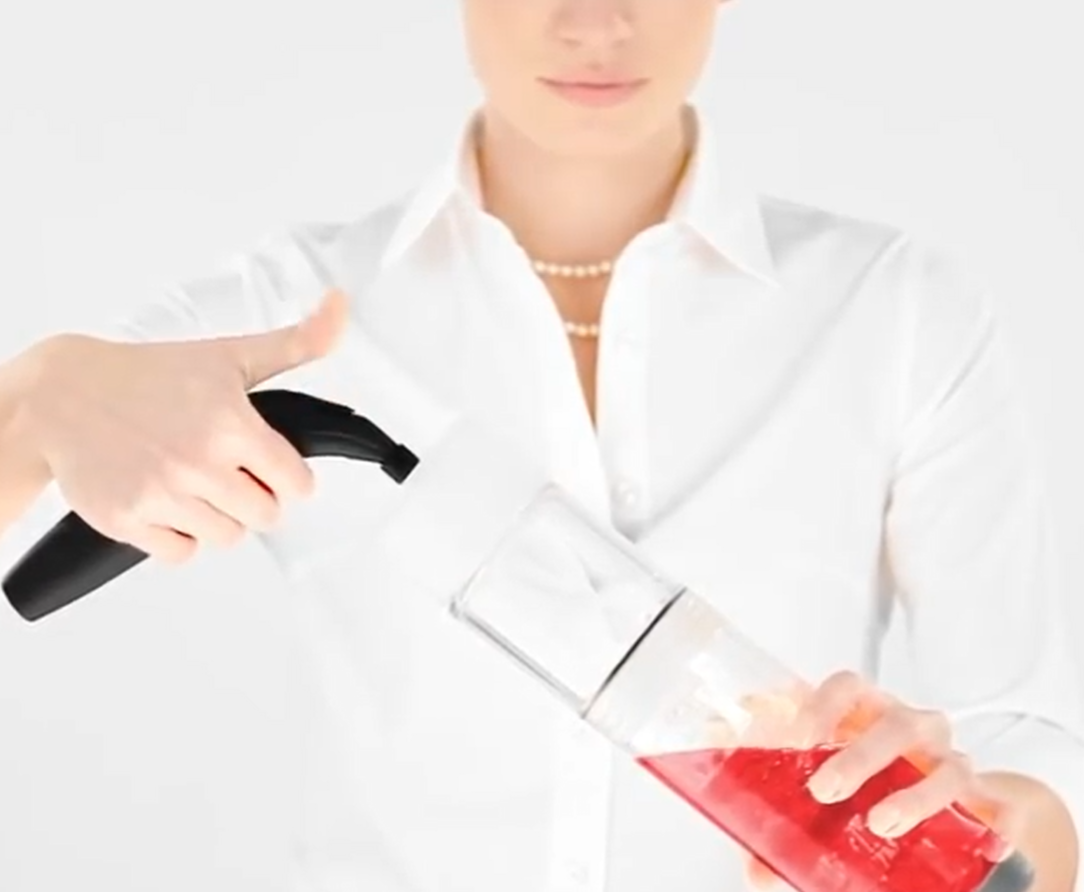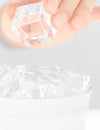Factors Affecting Carbonation in Perlini
Carbonated drinks made with Perlini are extremely easy to make. There are some basic considerations, however, that need to be understood to produce the best results. This blog post examines the most important factors affecting the uptake, retention, and efflux of CO2 in the Perlini System, and other factors affecting the quality of the resulting cocktails.
1. Temperature
Temperature of the liquids being carbonated is by far the most important variable in the proper use of Perlini. All other things being equal, the capacity of a liquid to absorb CO2 is much greater for lower liquid temperatures. As illustrated by the graph below, the difference in the amount of CO2 that can dissolve in a liquid at near freezing temperatures versus room temperature (~25 C) is about a factor of two or more, which is the difference between a barely carbonated drink and a vigorously carbonated drink. Warm liquids simply will not carbonate satisfactorily—this is just physics. So, the liquid ingredients must be shaken over ice for good effect (or all the liquids used must be prechilled to refrigerator temperatures, which is generally not practical).
To ensure that the liquids being carbonated are at the optimal temperature, always completely fill the lower half of the shaker with ice.

2. Pressure
The Perlini shaker must be pressurized fully to the pre-set pressure to work properly. If the headspace of the Perlini shaker is not fully pressurized, there may not be a sufficient reservoir of CO2 in the headspace to fully carbonate the liquid ingredients. If the lower half of the shaker is completely filled with liquid and ice, and the headspace is filled to the proper pressure, there will barely be enough CO2 to effect proper carbonation (but see the section 4. Volume of Liquid below).
The regulator will stop the flow of gas at the proper pressure (~60 psi) with both the hand-held unit and the commercial pressurizer.
Make sure there are no leaks from either the O-ring area or the seal in the cap. If you hear no audible leaking, and the flow of CO2 has stopped, then the shaker should be at the proper pressure.
3. Shaking the Cocktail
CO2 can only be absorbed into solution through the liquid-gas interface, which is only a few square inches for Perlini. Shaking is what causes the CO2 to dissolve into solution quickly: the splashing caused by the agitation dramatically increases the liquid surface area through which CO2 is absorbed. If the pressurized Perlini were left to sit, it would take hours for the CO2 to dissolve into solution; shaking reduces that time to seconds.
There is a balance, however, between shaking too hard which creates many small suspended bubbles, and hence nucleation sites (see below), and not shaking hard enough or long enough to dissolve the CO2.
Five or six seconds of moderately hard shaking is usually optimal; but this is something that every user will have to develop a feel for.
4. Volume of Liquid
The greater the liquid volume that you are trying to carbonate, the less CO2 there is in the headspace of the shaker to dissolve into the liquid and create effervescence. Perlini is really meant to be a single-cocktail device, with typically no more than four or five ounces of liquid ingredients. If the lower half of the shaker is filled to the brim with liquid ingredients, you may have to shake, re-pressurize, and shake again to get enough CO2 into solution.
5. Nucleation
All bubbles that you see rising out of a carbonated beverage form either on existing bubbles trapped in scratches in the glassware, or bubbles trapped on impurities like lint or dust, or on dissolved particles with rough surfaces. These "seeds" are called nucleation sites. Clear ingredients (e.g., spirits, water, cranberry juice) have fewer nucleation sites than cloudy ingredients (e.g., orange juice, lime juice, pineapple juice, coffee), and tend not to lose CO2 as rapidly in the decompression, resting, and pouring phases.
6. Settling Period
Notice that when the cap is slowly loosened to relieve the pressure, the carbonated liquid "blooms", or foams up. This is largely due to the fact that the shaking action creates a lot of fine bubbles, just as with a regular cocktail shaker.
These little bubbles act as nucleation sites, causing the resulting bloom of foam--which is CO2 that never makes it to the customer's glass. The longer you wait for the bubbles to die down, the more CO2 will remain in solution. This has to be balanced against increased dilution and longer drink assembly times (see my blog post, Ice and Dilution in Shaken Cocktails). Under most circumstances, 15-20 seconds should be sufficient. Very sweet, viscous drinks may require longer for the foam to die down, as the viscosity will cause the bubbles to persist longer.
7. Post-Shaking Agitation
After the shaker is depressurized, any agitation from stirring or pouring will release CO2. Refrain from stirring in any extra ingredients after shaker is opened, and pour the cocktail quietly down the side of the glass. Tilting the glass, as with a draft beer, will help reduce the loss of CO2.
8. Type of Ice
The ice itself is a source of nucleation sites. The less surface area of the ice, and the smoother the ice, the better. Five or six cubes of cold-press ice is much better than crushed ice or ice in odd shapes. Also, the colder the ice, the colder the resulting cocktail, which means greater CO2 absorption, and the less dilution.
9. Alcohol Concentration
CO2 is very soluble in water; less so in alcohol. So, you will get the most carbonation with drinks that are less alcoholic and more dilute. Pure spirits will certainly carbonate, but much less so than cocktails that incorporate low-proof mixers.
Incidentally, liquids with higher alcohol concentration will also typically cause more dilution. Because alcohol lowers the freezing point of the solution, the resulting mixture after shaking will be colder with a high-alcohol content than with a low-alcohol content; and this implies that more ice must have melted to bring the temperature down further.
10. Acidity of Solution
The amount of CO2 that will dissolve in solution decreases slightly with increasing acidity. Thus, all other things being equal, tart drinks may absorb slightly less CO2. This is a very small effect, however.
11. Sugar Content
The amount of CO2 that will dissolve in solution decreases slightly with increasing sugar content. Thus, all other things being equal, sweet drinks may absorb slightly less CO2. This is also a very small effect.
12. Visual Clarity and Glassware
It is said that we drink with the eyes as much as the mouth, and this is very true with Perlini. Tall, narrow flutes will show off the bubbles better, both because of a longer bubble path as well as the fact that the opacity given to a cocktail by the pulp in juices is less evident in a narrow glass, allowing the bubbles to be seen better.
13. Surface Area and Glassware
All CO2 lost from a cocktail once it is in the glass is either from visible bubbles or invisible molecular diffusion at the top surface of the cocktail. In fact, under most circumstances, diffusion is usually by far the dominant mechanism (as much as five times greater). The smaller the surface area at the liquid-air interface, the less gas escapes. So, a tall narrow flute retains dissolved CO2 better than a coupe.






